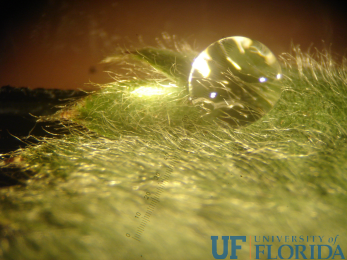
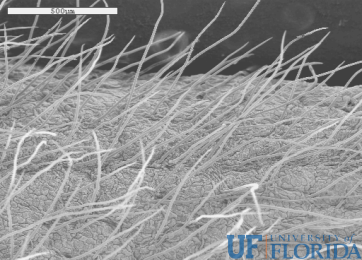
One of the water-repellent hairy surfaces from nature which inspired this work along with insects and spiders. Water forms a perfectly spherical droplet on the leaf surface and easily rolls off. The black and white picture is an electron microscope image (right) showing the leaf densely covered with hairs (trichomes), which effectively prevent the droplet from wetting the leaf. A rather large QuickTime video of the research can be found at the following link.
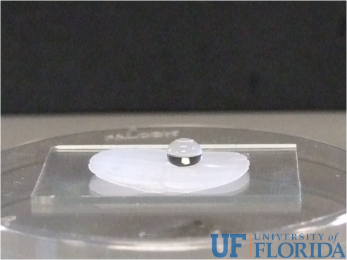
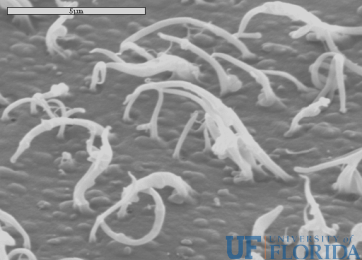
Highly water repellent synthetic surface made from a plastic (polypropylene) film mimicking the hairy surface of arthropods (insects and spiders). Here water forms a cm sized spherical bead on the surface that is deformed by gravity. Insert on top left shows an electron microscope image (top-left corner) of the surface which is covered with tiny hairs (diameter less than 10-6 m) which are similar to natural ones.
Highly water repellent synthetic surface made from a plastic (polypropylene) film mimicking the hairy surface of arthropods (insects and spiders). Here water forms a millimeter sized spherical bead on the surface. The self cleaning ability of these surfaces is demonstrated in the image below. From (a) to (f), samples were covered in dirt (carbon black). Water droplets that came in contact with the dirty surfaces pick up the dirt and remove it while rolling off. The whole cleaning requires only a few droplets. A short demonstration video of the self cleaning ability is here. The sample on the left is a typical polypropylene film, while the sample on the right mimics the structure of spider hairs.
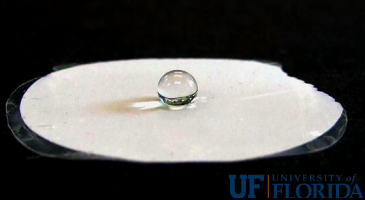
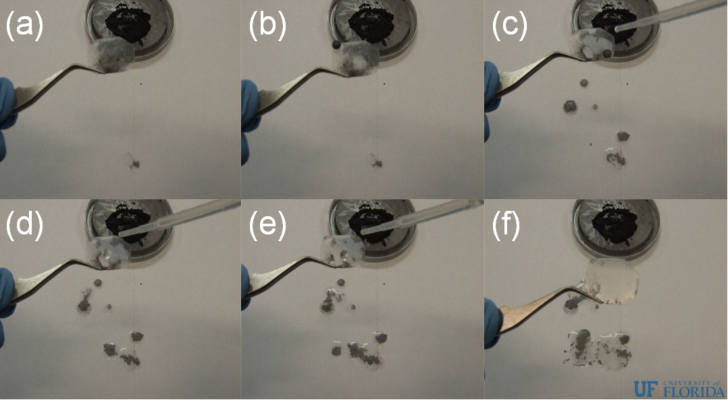
References:
- Artificial Hairy Surfaces with a Nearly Perfect Hydrophobic Response
Shu-Hau Hsu, Wolfgang M. SigmundLangmuir 2010 26 (3), 1504-1506